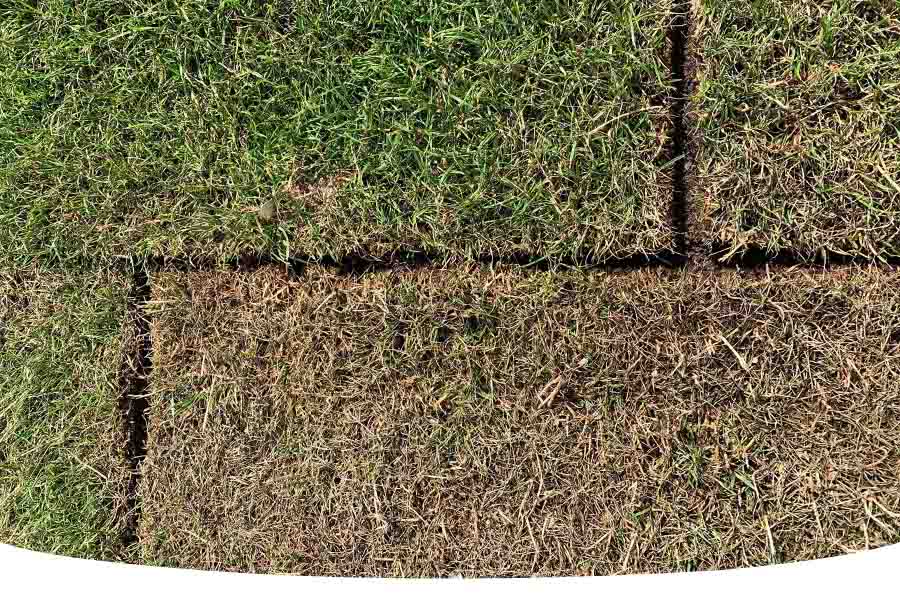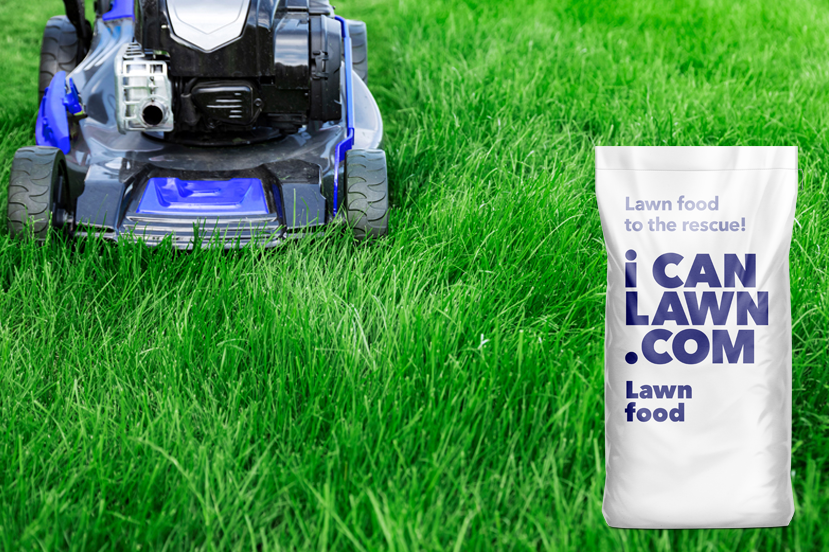What is the best grass seed for a new build garden?
There’s nothing quite like stepping into your new build home ready to make memories for a lifetime, and if you’re like most homeowners in the UK, you’ll be doing this when summer rolls around. Whilst you may find most of your snagging complete, one thing may be nagging you – your patchy new build garden!

Typically, most new builds are laid with new turf. Whilst this looks great for a number of weeks or months, it will eventually begin to deteriorate. This is because most new builds have clay soils that can present as wet and boggy in winter and dry and cracked in summer. Most turf that has been laid will not be able to withstand these conditions, leaving you with a less than impressive garden within months of moving in.
Signs your new build turf is failing
When fresh turf is laid, the lines of each roll will be visible, but over time, these should disappear as the turf knits in with the existing soil. Depending on when you move into your new build, you may find that this isn’t happening so easily due to the soil being extremely dry – therefore not creating seed-to-soil contact, or very wet and boggy – turning your lawn into a mud pit. In some cases, you may be able to easily lift up the turf. Below are some of the signs to look out for;
- Turf lines are visible
- Yellowing
- Dead grass
What can I do to save my new build garden?
If your new build lawn looks a little worse for wear, don’t worry – it’s still salvageable! You can easily overseed and feed your lawn with the right products to get it looking its best again. Overseeding is a great way to revive and repair your existing grass without starting from scratch again.
The best grass seed for a new build garden
The best grass seed for your new build garden will be one that can withstand the clay soil conditions. Our New Build Dream Lawn grass seed contains specific grass seed species that can grow in your new build soils – if you don’t believe us, check out some of the transformations below!
How to overseed your new build garden
As is the nature of clay soils, they can be challenging to work with, whether dry or wet, so preparation for sowing new seed is vital. The best times to sow new grass seeds are spring and autumn, as these offer ideal temperatures with regular rainfall that will get your seedlings off to the best start. Here’s how you should tackle overseeding your new build garden;
Step 1: Remove weeds and moss
If your garden is relatively new, it may be unlikely that you have weeds and moss – but regardless, you should remove these before sowing new seed. You can remove weeds by using a spray weedkiller or by removing them by hand, making sure to remove all the roots. Moss can be removed by raking it out; do not use a feed, weed and moss killer type product on a lawn that is less than 6 months old.
Step 2: Create a fine level seedbed
With weeds and moss removed, the slightly trickier part is now achieving a fine and level seedbed. Clay soils can be difficult to work with, but you can make clay soils work for you! One of the main reasons why seed fails to grow in clay soils (besides not being the right mix for your lawn) is that the soil is extremely compact.
To alleviate this, take a pitchfork and spike your soil to break it up, churning it over. This will make it easier to rake to level. Once you have raked your soil, you may find that some areas in your lawn dip or could use a top-up. We’d recommend using high-quality screened topsoil. Use the back of your rake to smooth out any lumps or bumps, and you have a fine-level seedbed!
Step 3: Use a pre-seed feed & sow your seed!
Feeding your lawn may seem like a myth, but it can boost your seed and improve your soil health – especially if your lawn hasn’t been fed in a long time, or ever! Our Pre-Seed First Feed gives your seed the best foundation for growth and can help you see results faster so that watching the grass grow isn’t actually the arduous task it’s made out to be!
- Apply Pre-Seed First Feed at a rate of 70g per m2, and water in until the granules dissolve in your lawn.
- Wait 10 days, then sow your seed.
- To overseed your lawn, sow New Build Dream Lawn at a rate of 35g per m2 using your hand or a seed spreader.
- Rake your seed in so that it is in amongst your soil. 3 x £1 coins stacked is deep enough for your seed to access nutrients and be close enough to the surface to receive sunlight.
Step 4: Keep it watered
Watering your seed daily, for six weeks post-sowing, is extremely important. If it rains during this time, you can set the sprinkler down. Learn how to water your lawn using our guide.
Step 5: First mow
6-8 weeks after sowing, your new grass should be hitting the 5-7cm mark, which means it’s ready for its first mow. Remember to mow your new grass on the highest setting on your lawnmower, and follow our mowing tips to ensure your first cut is a resounding success!
Step 6: Keep it healthy
Once you have new, healthy, lush, green grass in your new build garden, it will be easy to think your work is done. But completing smaller maintenance tasks more often can help keep your lawn healthy all year round!
Feeding your lawn and seasonally overseeding is a great way to keep your lawn looking fresh and always garden party-ready!
To find out what to feed your lawn and when, follow our lawn feeding guide.







